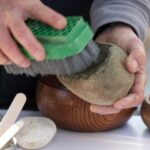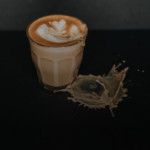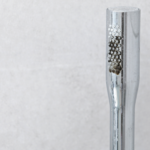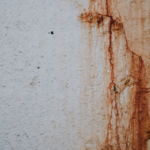Optimal care & maintenance starts with expert knowledge.

Caesarstone surfaces play a pivotal role in the dynamics of household life. Our easy-to-implement care & maintenance guidelines provide your customers with maximum peace of mind.
Removing Stains from Caesarstone Countertops
learn moreThe Surface Care Essentials
Caesarstone Quartz & Mineral countertop owners benefit from surfaces that are non-porous and highly durable. For long-term satisfaction, implementing the following surface care priorities is strongly recommended.
Prevent Patina
Liquid spills and splashes must be wiped immediately. The surface should always be kept dry.
Dark Surfaces
Patina and stains may be more noticeable. Cream-textured cleaning products are not recommended.
Heat Caution
Hot cookware should always be placed on trivet and hot pads.
Avoiding Scratches
Using a cutting board and clearing away sharp utensils is crucial.
Chemicals
Prolonged exposure may damage the surface. Chemicals with high or low pH levels should be used with caution.
Cleaning Products
It is important to check each cleaning product on an inconspicuous area to ensure it doesn’t damage the surface.
The Countertop Care Essentials
Our porcelain countertops offer countless advantages, including optimal heat and scratch resistance. Yet surface care is important – and the following easy-to-implement guidelines help ensure long-term satisfaction.
No Oil-Based Cleaning or Polishing
Using oil-based materials can leave an oily film and make the surface more sensitive to staining.
Dark Surfaces
Fingerprints, limescale, and other signs of daily life may be more noticeable, requiring more frequent cleaning.
Intact Surface
Its best to avoid hard knocks on exposed areas, particularly on edges.
Avoiding Scratches
Using a cutting board and protecting the surface from sharp objects is recommended
No Hydrofluoric Acid
Using hydrofluoric acid or materials that contain it can damage the surface.
Cleaning Products
It is important to check each cleaning product on an inconspicuous area to ensure it doesn’t damage the surface.




